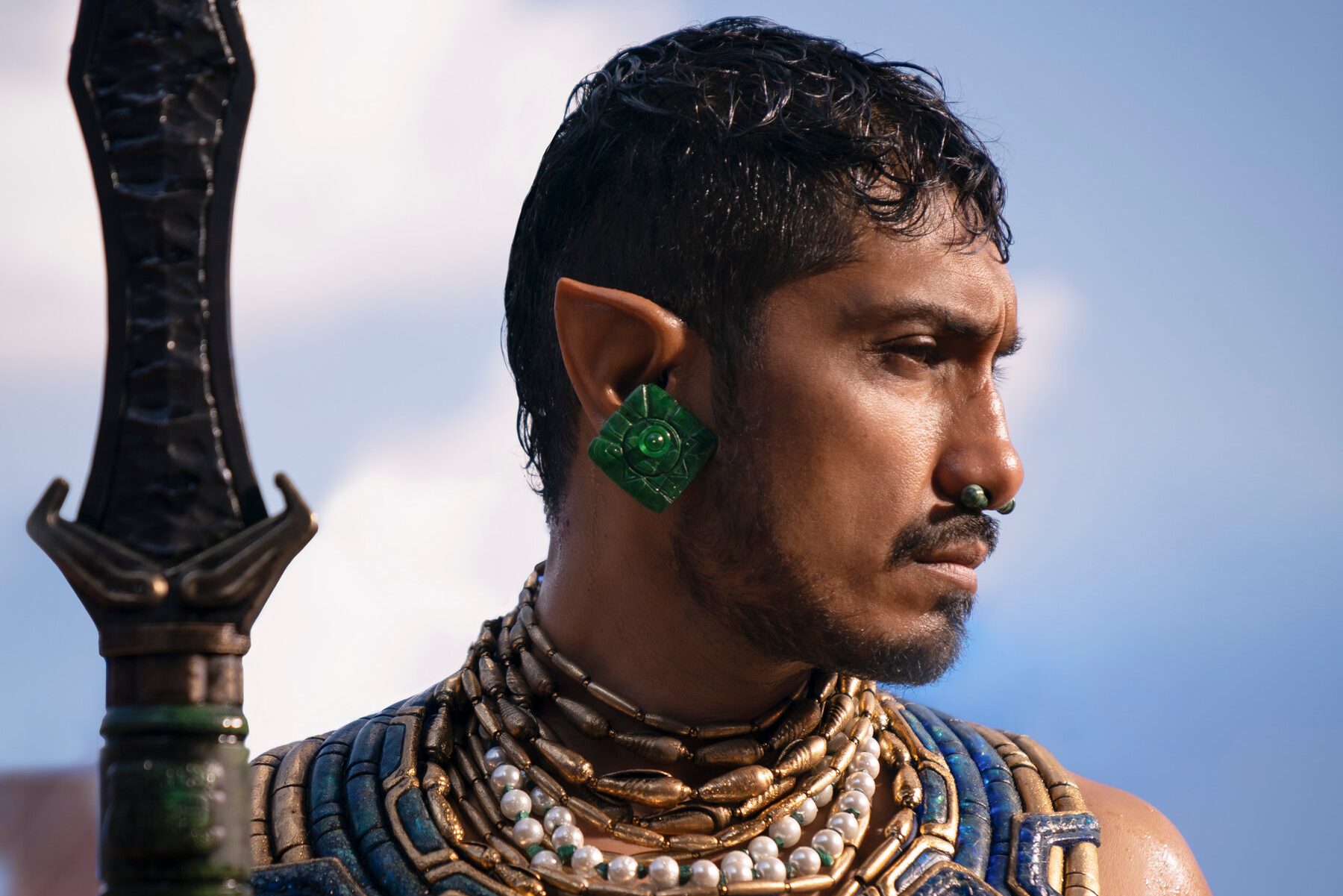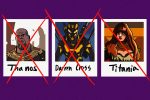“Black Panther: Wakanda Forever” is the sequel to the first “Black Panther” movie. When Chadwick Boseman, the original film’s lead actor, died in 2020 from cancer, Marvel fans wondered if any other actor could replace him. Nevertheless, the joint efforts of the cast and crew of “Black Panther” pay honorable tribute to the late actor in the series’ sophomore film.
In the sequel, the audience is introduced to Namor, who is presented as the villain but is really more of an anti-hero. In the comics, Namor — also known as the Sub-Mariner — is the half-human and half-merman ruler of the underwater kingdom of Atlantis. This complex aquatic guardian first appeared in 1939’s “Marvel Comics #1,” wherein he both battled and teamed up with T’Challa (Black Panther) and Captain America.
Director Ryan Coogler stated that Namor and his people represent the Indigenous people of Mesoamerica. In the movie, Namor is a mutant who acts as the ruler of Talokan, a Mesoamerican-inspired underwater civilization. According to Nili Blanck of Smithsonian Magazine, Mesoamerica is “a historic region spanning modern-day Mexico, Guatemala, Honduras, Belize, El Salvador, Nicaragua and Costa Rica. Mesoamerican Indigenous groups include the Maya, the Olmec, the Aztecs (or Mexica) and the Toltec.”
Throughout the film, Namor is portrayed as an enemy of Wakanda after he declares war against Queen Ramonda and her people. In reality, Namor is an anti-hero due to his heroic goals of wanting to save his people while protecting the oceans from pollution. He is also a fierce character who chooses to be loyal to his people instead of ruling with a desire for power. The half-merman-half-human does not see himself as a villain, but as a leader who protects Talokan by keeping the civilization a secret from land-dwellers. Talokan also serves as a safe haven for Mesoamerican Indigenous people who suffered as a result of Spanish colonialism. Since the people of Talokan see Namor as a God, they refer to him as “Ku’ku’lkan,” a serpent god from Mayan mythology.
Although the Talokan civilization was originally located in Atlantis in the comic books, Coogler decided to change it to a Mesoamerican civilization for the movie. The staff and director worked with historians to bring Mesoamerican culture and mythology to life on the big screen, as they wanted to bring attention to its lost civilizations. The movie’s costume designer, Ruth E. Carter, took inspiration from Mesoamerican art and clothing to create a feathered headdress for the character of Namor. She even added jade, kelp and other aquatic materials to the headdress to channel the aesthetics of underwater creatures such as the lionfish.
Just as Mesoamerican history inspired the clothing, Mayan and Aztec mythology were similarly influential on Talokan. In fact, the name Talokan was taken from Tlālōcān, an Aztec paradise overseen by the rain god, Tlāloc. Additionally, the Mayan serpent god that Namor derives his title from, Ku’ku’lkán, is also known as Quetzalcóatl in Aztec mythology. According to Carter, “We worked with historians who were experts on the Mayan culture to learn about what part of the trajectory of the ancient Mesoamerica area we would draw from … And so we looked at beautiful sculptures of different scenes depicting the lifestyle of post-classic Yucatán, and the feathered-serpent figures were the ones that were the most powerful looking.”
Namor reveals that Talokan was founded on and around vibranium a hundred years ago when Spanish colonizers arrived on the Yucatan Peninsula and began spreading diseases, killing thousands of Indigenous people. Some of the Indigenous people escaped by consuming a plant transformed by vibranium that allowed them to breathe underwater and retreat to the ocean’s depths. When Namor’s mother consumed the plant, it turned him into a mutant. Polygon writer Joshua Rivera states that Namor, “represents and leads a nation born from loss, and that loss informs everything he does and believes — and also allows the character to transcend his complicated four-color origins and become the perfect foil for a film about grief.”
Later, as a child, Namor and his people return to the surface to bury his mother. There, he witnesses other Indigenous people being enslaved by colonizers. Young Namor and his people slaughtered the colonizers as retribution for the genocide against his people. One of the colonizers calls him, “El niño sin amor” — “the boy without love.” Namor takes his name from the phrase “sin amor” — “without love” — as a title for his enemies to fear. Rivera also states, “Namor becomes a metaphor for the Latin diaspora, a vast mosaic of people and cultures united by the plunder of colonialism and the eradication of Indigenous nations.” Moreover, the language that Namor and his people speak is Yucatec Maya.
“Black Panther: Wakanda Forever” has expanded its cast to make the movie more diverse and representative of other cultures. The film’s depiction of Namor and his people provides much-needed Mesoamerican representation to Marvel screens.
















